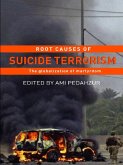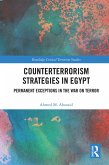Targeted killing has become a primary counterterrorism measure used by several countries in their confrontation with lethal threats. The practice has been extensively used by the US in Afghanistan, Iraq, Pakistan, Yemen and Somalia, and by Israel in the West Bank and Gaza. Several studies have already explored the difficult balance between achieving security while maintaining the liberties and rights of a country's civilians. This book goes a step further by seeking to examine whether maintaining those liberties by complying with legal standards and minimizing unintended deaths can be more effective for national security.
Using targeted killing applied by Israel, in particular, as well as the United States during the first decade of the twenty-first century as case studies, this book explores that question and ultimately assesses whether compliance with legal standards can strengthen a state in its campaign against terrorism and thus provide stronger security. The book focuses on civilian-related criteria, hypothesizing that minimizing civilian casualties will maximize effectiveness in an asymmetric war setting. The conclusions are not limited to a specific tactic or theater, and if adopted might have far-reaching implications for how asymmetric warfare is strategized.
This book will be of much interest to students of counter-terrorism, law, Middle Eastern studies, and security studies.
Dieser Download kann aus rechtlichen Gründen nur mit Rechnungsadresse in A, B, BG, CY, CZ, D, DK, EW, E, FIN, F, GR, HR, H, IRL, I, LT, L, LR, M, NL, PL, P, R, S, SLO, SK ausgeliefert werden.
'In this thoughtful and well researched manuscript, Falk provides an important service to policy makers of democratic nations who are called upon to combat terrorism while preserving freedom. As an attorney and former counterterrorism combatant, I find this book to be a beacon of light amidst the moral fog that at times engulfs leaders when faced with the paramount task of confronting terrorism.'--Joseph Asch, Former Head of Criminal Division at Israel's State Attorney's Office and Major (Res.) in the IDF's elite naval commandos (S-13).
'Ophir Falk takes on the vexing topic of the effectiveness of targeted killing as a military tactic, employed by democracies against terrorists, specifically in the Israeli setting in the early 21st century. His analysis is presented to the reader within the construct of the Law of Armed Conflict and Just War Theory [...] Technology is predictably and quickly advancing; tools and techniques available to terrorists, and the governments who face off against them, are correspondingly more widely available and increasing in their scope and lethality. Dr. Falk's thinking on the profound issue of whether, how, and when it may be permissible to take life in the counter-terrorism setting -- and, if so, on its effectiveness -- is thus more important now than ever before.'-- Karl Wagner, Founder and CEO of Eastern Sky Technologies and former Senior National Security Executive (ret.)
'This is an important account of the application of the rule of law when it comes to the permissibility and
effectiveness of governments' use of targeted killing in counter-terrorism campaigns against terrorist
adversaries. Especially noteworthy is the author's basing of overall effectiveness in the employment of the tactic of targeted killings in terms of legal, moral and operational factors.'--Perspectives on Terrorism, Vol. 14, Issue 5









